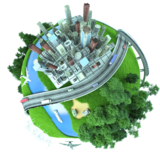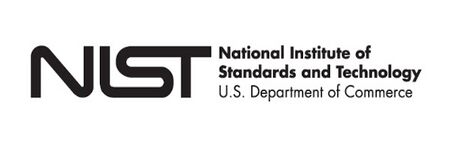NIST: Difference between revisions
Created page with "{{Organization |logo=NIST600.jpg |sector=Data |type=Federal Government |foundation=March 3, 1901 |founder=Department of Commerce |location_city=Gaithersburg MD |location_count..." |
No edit summary |
||
| (One intermediate revision by the same user not shown) | |||
| Line 8: | Line 8: | ||
|location_country=United States | |location_country=United States | ||
|area_served=Country | |area_served=Country | ||
|key_people= | |key_people=Michael Dunaway | ||
|products=Standards | |products=Standards | ||
|revenue=$1.3B | |revenue=$1.3B | ||
|num_employees=3400 | |num_employees=3400 | ||
|homepage=https://www.nist.gov/ | |homepage=https://www.nist.gov/ | ||
|sponsorship= | |sponsorship=Premium Sponsor | ||
|description=The National Institute of Standards and Technology (NIST) is a physical sciences laboratory and non-regulatory agency of the United States Department of Commerce. Its mission is to promote American innovation and industrial competitiveness. NIST's activities are organized into laboratory programs that include nanoscale science and technology, engineering, information technology, neutron research, material measurement, and physical measurement. From 1901 to 1988, the agency was named the National Bureau of Standards. | |description=The National Institute of Standards and Technology (NIST) is a physical sciences laboratory and non-regulatory agency of the United States Department of Commerce. Its mission is to promote American innovation and industrial competitiveness. NIST's activities are organized into laboratory programs that include nanoscale science and technology, engineering, information technology, neutron research, material measurement, and physical measurement. From 1901 to 1988, the agency was named the National Bureau of Standards. | ||
}} | }} | ||
Latest revision as of 05:54, February 10, 2022
- Members
The National Institute of Standards and Technology (NIST) is a physical sciences laboratory and non-regulatory agency of the United States Department of Commerce. Its mission is to promote American innovation and industrial competitiveness. NIST's activities are organized into laboratory programs that include nanoscale science and technology, engineering, information technology, neutron research, material measurement, and physical measurement. From 1901 to 1988, the agency was named the National Bureau of Standards.
Activities

|
Managing Cybersecurity and Privacy Risk for Smart Public Safety IoT Devices and Systems | |
| This use case provides a notional approach to address cybersecurity and privacy risks related to incorporating IoT in smart public safety applications. This use case posits some of the major activities, key stakeholders, and potential resources for each step of the cybersecurity and privacy risk management process. | ||

|
Whole Community Preparedness for Smart, Connected Cities | |
| Help shape the future of disaster response and recovery! This interactive workshop, led by the National Institute of Standards and Technology (NIST), will explore innovative technology applications and strategies to improve public safety planning and community resilience in smart cities and communities.
Your participation will help define the framework for a cutting-edge cyber-physical-social system that enhances multi-agency collaboration and community disaster planning and response. Don’t miss this opportunity to contribute to a groundbreaking initiative that empowers cities and regions to manage complex crises more effectively. | ||

|
IES-City Framework | |
| Two barriers currently exist to effective and powerful smart city solutions. First, many current smart city ICT deployments are based on custom systems that are not interoperable, portable across cities, extensible, or cost-effective. Second, a number of architectural design efforts are currently underway (e.g. ISO/IEC JTC1, IEC, IEEE, ITU and consortia) but have not yet converged, creating uncertainty among stakeholders. To reduce these barriers, NIST and its partners convened an international public working group to compare and distil from these architectural efforts and city stakeholders a consensus framework of common architectural features to enable smart city solutions that meet the needs of modern communities. | ||
Details
Smart Cities and Communities, Cyber-physical Systems, and Internet of Things: Cities and communities across the globe are seeking to deploy advanced technologies such as Cyber-Physical Systems (CPS) and Internet of Things (IoT) to improve the quality of life for their residents. Such a system involves cyber-networking devices and other supporting systems working with physical infrastructure. When applied to transportation, health care, utilities and other sectors, these CPS and IoT could expand and improve services, promote economic growth, and enhance quality of life.
NIST’s Role: NIST works to develop the foundations and measurement science for CPS and IoT. NIST considers smart cities and communities to be an opportunity for studying CPS and IoT at scale, across sectors, and their interactions between devices, applications, and humans. In conducting this research, NIST seeks to facilitate stakeholders’ development of replicable, scalable and interoperable smart cities and communities.
NIST’s Smart Cities and Communities Projects: NIST engages stakeholders, encourages partnerships and collaboration, and informs them of key findings and developments by offering a set of frameworks. Current projects are:
Global City Teams Challenge (GCTC): This is a collaboration platform. It brings together cities, communities, industry, academic, and government stakeholder, seeking emerging technologies for smart cities and communities. The GCTC acts as a matchmaker and incubator, helping form public-private partnerships, called Action Clusters and SuperClusters, dedicated to implementing a given smart city and community project. For more information see GCTC.
Smart Cities and Communities Framework (SCCF) series: These are best practices in the field of smart cities and communities. The NIST SCCF series consolidates and organizes these practices for the purpose for informing smart city and community development and deployment. For more information see SCCF.



